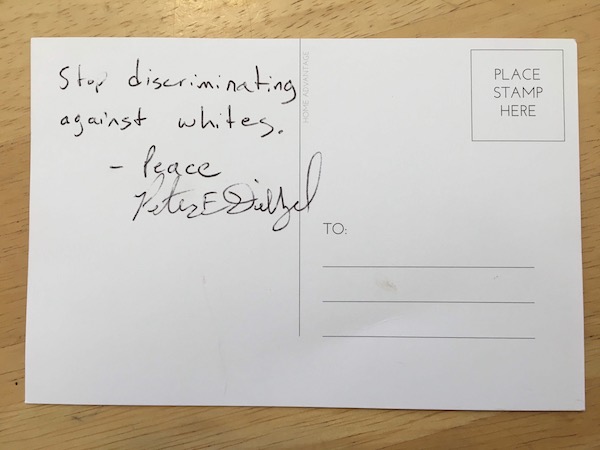Category Archives: Reflect
Why we celebrate Hispanic Heritage Month
What began as Hispanic Heritage Week in 1968 under President Lyndon B. Johnson, transformed into a 30-day period of celebrating Hispanic communities and achievements.
In 1987, California Rep. Esteban Torres proposed a bill to expand the week-long celebration to a whole month.
“We want the public to know that we share a legacy with the rest of the country, a legacy that includes artists, writers, Olympic champions, and leaders in business, government, cinema, and science,” Torres said in his remarks about the bill.
Hispanic and Latinx immigrants finds uncertain welcome in Hoosier state
A notable example, in May 2011, was Indiana Senate Bill 590, which granted police officers permission to ask for proof of legal status under “reasonable suspicion,” according to LegiScan, a national data service. According to an article published by Indiana Public Media, the bill sponsor, Republican Sen. Mike Delph, who was in office from 2005 to 2018, said the bill was inspired by already-existing standards of the U.S. Supreme Court.
“I believe, to most people in Indiana, if you cannot speak the English language and you’re in your 20s, 30s or 40s, you’re probably not lawfully in the country,” Delph said, per the 2011 article.
Indiana must do more to put more Hoosiers of color and women onto and successfully through its tech education pathways

Finding and retaining talent is job No. 1 for the Indiana tech workforce, but the traditional education path is working for only a small %age of Indiana students and employers. Indiana must resolve its issues of access, opportunity and equity if it is to develop the tech workforce that companies must have in the coming years.
Modernizing our educational pathways will be difficult, and it won’t be helped by additional factors discussed earlier on TechPoint Index like the pandemic-induced Great Resignation, the wave of Baby Boomer retirements, and a poorly timed college enrollment cliff that alone were creating a perfect storm of tech talent supply and demand challenges. Our recent research with Fourth Economy and credible economic indicators, clearly show us an Indiana tech talent imperative: We must inclusively grow and develop the state’s tech workforce to 230,0000 workers by 2030.
Sherri Papini’s kidnapping stoked racial division and fear. Investigators say it was all a lie
Sherri Papini disappeared in 2016 while on a run around her Shasta County neighborhood. Twenty-two days later, she returned, beaten, bound and branded, claiming that her kidnappers were women who spoke Spanish and that one had long and curly hair, thin eyebrows and a thick accent.
COVID-19 en Indiana: Este es el mensaje de una enfermera para familias en Indianápolis
Monica Hammerly ha visto a muchas personas morir de COVID-19 y no quiere ver más.
La enfermera de recursos de la unidad de cuidados intensivos en Indiana University Health ha sido testigo de la frustración de los miembros de la familia de los pacientes, especialmente los de la comunidad latina e hispana a quienes ella cuida a menudo, quienes desean podido haber hecho más para prevenir la propagación del virus.
“He visto personas con síntomas graves un día y en un ventilador,” dijo Hammerly, de 59 años. “Y al día siguiente, se deterioran por completo.”
https://uw-media.indystar.com/embed/video/4010149001?placement=snow-embed
ICE out of MoCo
On January 25, 2017, President Trump’s Executive Order 13768 broadened “interior enforcement” priorities to target ALL undocumented immigrants for deportation regardless of their individual circumstances. In the three years since, this massive expansion has devastated immigrant families and communities around the US—including right here in Indiana’s Monroe County. MoCo Sheriff Brad Swain voluntarily collaborates with ICE (Immigration Customs and Enforcement) to detain our neighbors and friends. These detentions are unnecessary, unconstitutional, and immoral. We need to stop them NOW.
YOU Can Get ICE Out of MoCo:
- WRITE your County Commissioners and County Council Representatives. Use the sample letter and contact information below. NOW is the time.
- Broadcast #iceoutofmoco and #IceOutofMoCo on all your social media accounts. Spread the word NOW.
- Learn more by exploring the file listed below.
2019 The Year of the Farmers’ Market Controversy

Looking back, the antiracist and antifascist activists who have worked to air this issue have been stunningly successful. Besides the City of Bloomington, other entities have held multiple community forums to wrestle with it. Countless exchanges among area residents have taken place online and offline, in the open and behind closed doors. Local media — Indiana Public Media, Indiana Daily Student, WFHB, The Bloomingtonian, B Square Beacon, The Herald-Times — have followed this upheaval. It has even appeared on the national radar, ranging from the progressive left (The Nation) to the extreme right (National Vanguard) to the middle-of-the-road (Newsweek) — including the front page of the New York Times, arguably the most influential mainstream U.S. newspaper.
Scattered across the conversations and coverage are the experiences of people of color. What would it mean to place their perspectives at the center of our reflection and think outward from there? To acknowledge them seriously and meaningfully? Might we come away with a fresh understanding of the stakes involved that could prove useful for moving the city past this deadlock?
Trump got his wall, after all!

A NATION OF IMMIGRANTS”—THESE FOUR WORDS, (The phrase was popularized by John F. Kennedy, who used it as the title of his 1958 book),
genius in their concision, mask the messiest of histories. People like to recall that George Washington wanted America to “be an Asylum to the persecuted of the earth.” Less often praised: Ben Franklin’s contention that immigrants are “the most ignorant Stupid Sort of their own Nation.” Americans have been having some version of this argument ever since. And for much of the country’s existence, public opinion towards immigration has ranged from tepid to hostile. As Daniel Tichenor, author of the comprehensive history, “Dividing Lines,” puts it, “We love the immigrant past and dread the immigrant present.”
[more]
